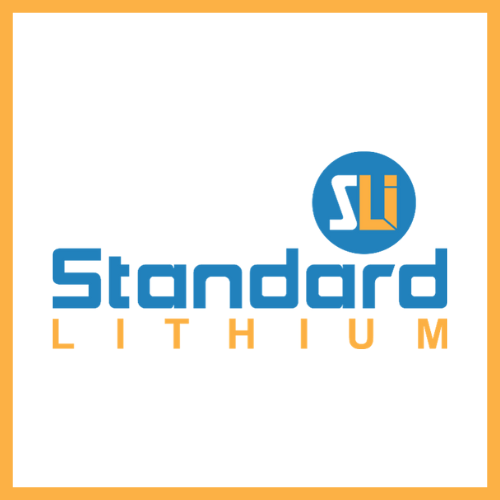Trump’s Mining Push: A New Era for Critical Minerals in America
April 20, 2025, 4:13 pm
Hecla Mining Company
Location: United States, Idaho, Coeur d'Alene
Employees: 1001-5000
Founded date: 1891
In a bold move, the Trump administration is fast-tracking permits for ten mining projects across the United States. This initiative aims to bolster domestic production of critical minerals, a vital component for modern technology and infrastructure. The projects, which include copper, antimony, and lithium, have been granted FAST-41 status. This federal program, initiated in 2015, is designed to streamline the approval process for critical infrastructure projects.
The White House is not just stopping at these ten projects. More are on the horizon, promising to reshape the landscape of American mining. Transparency is the name of the game. The administration has made it clear that the progress of these projects will be publicly tracked on a federal website. This is a move towards accountability, ensuring that the permitting process is not just efficient but also open to scrutiny.
Among the highlighted projects is an Idaho antimony and gold mine from Perpetua Resources. This project is seen as crucial for both economic and national security. The proposed Arizona copper mine from Rio Tinto is another key player, with the company emphasizing its importance for America’s energy future. The Montana copper and silver mine from Hecla Mining also stands to benefit from this expedited process.
The expansion of Albemarle's lithium mine in Nevada is particularly noteworthy. Lithium is the lifeblood of batteries, powering everything from smartphones to electric vehicles. The Arkansas direct lithium extraction project from Standard Lithium is also set to play a significant role in establishing a robust U.S. lithium supply chain. Meanwhile, an Alabama metallurgical coal project from Warrior Met Coal will support steel production, a cornerstone of American industry.
This initiative comes at a time when the global demand for critical minerals is skyrocketing. The transition to renewable energy and electric vehicles is driving this demand. Countries are racing to secure their own supplies, and the U.S. is no exception. The Trump administration’s decision to fast-track these projects is a strategic move to reduce reliance on foreign sources, particularly from China, which has long dominated the critical minerals market.
However, this push is not without its challenges. Environmental concerns loom large. Mining operations can have significant impacts on local ecosystems. The administration’s commitment to transparency will be tested as these projects move forward. Will the benefits of increased mineral production outweigh the potential environmental costs? This is a question that will need careful consideration.
Moreover, the administration is also exploring new tariffs on U.S. critical minerals imports. This is a clear shot across the bow in the ongoing trade disputes with global partners. By imposing tariffs, the administration aims to pressure countries like China, which has been a dominant player in the critical minerals sector. This move could reshape trade dynamics and encourage domestic production.
The mining industry is poised for a renaissance. The fast-tracking of these projects signals a shift in policy that prioritizes domestic production over foreign dependency. It’s a gamble that could pay off, positioning the U.S. as a leader in the critical minerals market. The stakes are high, and the outcome remains uncertain.
As the projects unfold, the spotlight will be on the companies involved. Perpetua Resources, Rio Tinto, Hecla Mining, and Albemarle are now at the forefront of this mining revolution. Their success will depend not only on navigating the permitting process but also on addressing environmental concerns and community impacts.
Public sentiment towards mining is mixed. While many recognize the need for critical minerals, there is also a strong push for sustainable practices. Communities affected by mining operations are increasingly vocal about their concerns. The administration must balance economic growth with environmental stewardship.
In conclusion, the Trump administration’s decision to fast-track mining permits is a significant step towards enhancing America’s critical minerals production. It reflects a broader strategy to secure domestic resources and reduce reliance on foreign imports. As the projects progress, the interplay between economic development and environmental responsibility will be crucial. The mining landscape in America is changing, and all eyes will be on how this unfolds in the coming years. The future of critical minerals is not just about extraction; it’s about building a sustainable path forward.
The White House is not just stopping at these ten projects. More are on the horizon, promising to reshape the landscape of American mining. Transparency is the name of the game. The administration has made it clear that the progress of these projects will be publicly tracked on a federal website. This is a move towards accountability, ensuring that the permitting process is not just efficient but also open to scrutiny.
Among the highlighted projects is an Idaho antimony and gold mine from Perpetua Resources. This project is seen as crucial for both economic and national security. The proposed Arizona copper mine from Rio Tinto is another key player, with the company emphasizing its importance for America’s energy future. The Montana copper and silver mine from Hecla Mining also stands to benefit from this expedited process.
The expansion of Albemarle's lithium mine in Nevada is particularly noteworthy. Lithium is the lifeblood of batteries, powering everything from smartphones to electric vehicles. The Arkansas direct lithium extraction project from Standard Lithium is also set to play a significant role in establishing a robust U.S. lithium supply chain. Meanwhile, an Alabama metallurgical coal project from Warrior Met Coal will support steel production, a cornerstone of American industry.
This initiative comes at a time when the global demand for critical minerals is skyrocketing. The transition to renewable energy and electric vehicles is driving this demand. Countries are racing to secure their own supplies, and the U.S. is no exception. The Trump administration’s decision to fast-track these projects is a strategic move to reduce reliance on foreign sources, particularly from China, which has long dominated the critical minerals market.
However, this push is not without its challenges. Environmental concerns loom large. Mining operations can have significant impacts on local ecosystems. The administration’s commitment to transparency will be tested as these projects move forward. Will the benefits of increased mineral production outweigh the potential environmental costs? This is a question that will need careful consideration.
Moreover, the administration is also exploring new tariffs on U.S. critical minerals imports. This is a clear shot across the bow in the ongoing trade disputes with global partners. By imposing tariffs, the administration aims to pressure countries like China, which has been a dominant player in the critical minerals sector. This move could reshape trade dynamics and encourage domestic production.
The mining industry is poised for a renaissance. The fast-tracking of these projects signals a shift in policy that prioritizes domestic production over foreign dependency. It’s a gamble that could pay off, positioning the U.S. as a leader in the critical minerals market. The stakes are high, and the outcome remains uncertain.
As the projects unfold, the spotlight will be on the companies involved. Perpetua Resources, Rio Tinto, Hecla Mining, and Albemarle are now at the forefront of this mining revolution. Their success will depend not only on navigating the permitting process but also on addressing environmental concerns and community impacts.
Public sentiment towards mining is mixed. While many recognize the need for critical minerals, there is also a strong push for sustainable practices. Communities affected by mining operations are increasingly vocal about their concerns. The administration must balance economic growth with environmental stewardship.
In conclusion, the Trump administration’s decision to fast-track mining permits is a significant step towards enhancing America’s critical minerals production. It reflects a broader strategy to secure domestic resources and reduce reliance on foreign imports. As the projects progress, the interplay between economic development and environmental responsibility will be crucial. The mining landscape in America is changing, and all eyes will be on how this unfolds in the coming years. The future of critical minerals is not just about extraction; it’s about building a sustainable path forward.


